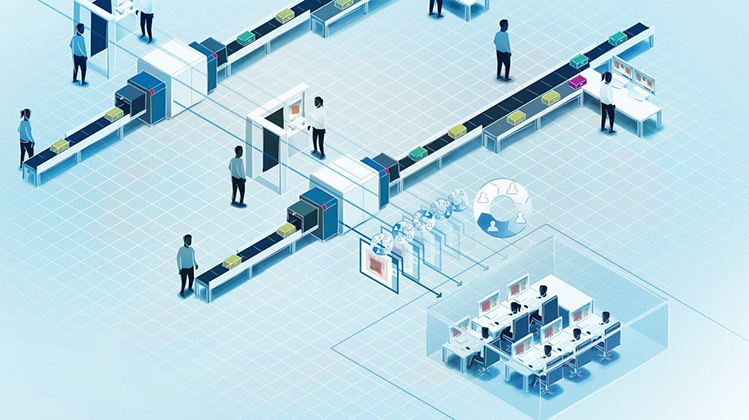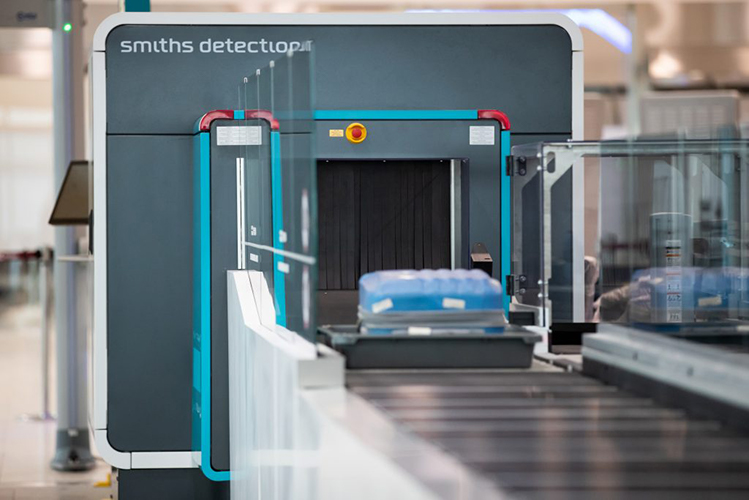By Richard Thompson, Global Market Director Aviation, Smiths Detection
The aviation industry has been deeply impacted by the COVID-19 pandemic, with travel bans and border closures instated to slow the spread of the virus.

Richard Thompson, Global Market Director Aviation, Smiths Detection
Against this backdrop, airports and airlines are seeking to regain the confidence of travellers once travel restrictions are eased, to help passenger numbers stabilise and eventually return to pre-pandemic levels. Indeed, instilling this confidence will likely be a matter of competitive advantage. As such, airports will be looking for both quick fixes, such as sneeze guards, and long-term solutions that check passenger health and then ensure the most sanitary conditions possible.
In the typical passenger journey, security checkpoints create bottlenecks, particularly at busy airports and during high season. Conventional security processes also tend to involve close interaction between passengers and operators, as well as physical contact with surfaces, given the usage of trays.
Security outcomes should never be compromised, so the unique challenge posed by the security checkpoint in a COVID-19 environment is preserving security levels while accommodating new health and hygiene measures.
The good news is that there are technologies available today that could be harnessed at the checkpoint to provide a seamless and automated passenger journey while also enhancing security.
Remote screening, enabled by centralised image processing, could be employed to allow operators to work in distant rooms. Not only does this reduce unessential passenger and operator interaction, but dramatically reduces queue times through enhanced operator efficiency.
EDS CB C3 approved CT technology allows for liquids and laptops to be left in bags, massively cutting down the number of trays handled by both staff and passengers, as well as the number of required rechecks due to their lower false alarm rates. Some existing X-ray equipment can also easily be upgraded to EDS CB C2 via a simple software update, removing the need to unpack laptops.

Remote screening, enabled by centralised image processing, could be employed to allow operators to work in distant rooms. Not only does this reduce unessential passenger and operator interaction, but dramatically reduces queue times through enhanced operator efficiency.
Short-wavelength UV light (UVC) is successfully being used for the disinfection of surfaces in industries with high hygiene requirements, for example the food and health sectors. We are exploring how this proven technology can be retrofitted into existing automated tray handling systems. UVC light deployed correctly is proven to kill virtually all bacteria and viruses on trays while they are being transported back from reclaim to the divest station.
Looking to the future, existing AI algorithms could be harnessed to enable automated ‘alarm resolution only’ screening at the checkpoint. While this is not a completely new concept, the current need for automation could very well accelerate the development and regulatory approval of a fully self-service security checkpoint of the future.
Whilst much remains uncertain, what is certain is that we must decipher the ‘new normal’ in the wake of COVID-19. For airports and airlines, which provide a service critical to both the global economy and liberated society, the new normal must be quantified and adapted to at speed. With the right technology, this path to recovery could be put on the fast track.
Smiths Detection is here to partner with airports and help restore passenger and employee confidence through the equipment and services we supply, the partners we work with and the safety measures we can help put in place. Our team of experts can work with airports to conduct a complete review of the screening operation and provide advice on effective measures and process changes.

The unique challenge posed by the security checkpoint in a COVID-19 environment is preserving security levels while accommodating new health and hygiene measures.







